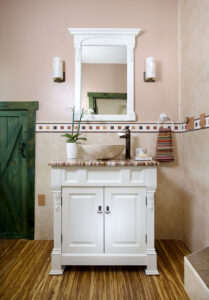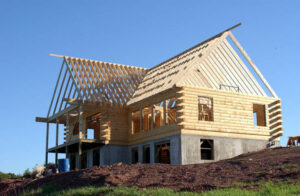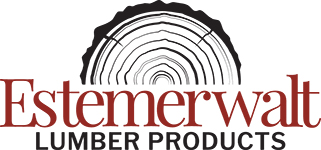You can build a log home within your budget. But you need to have a plan. The first part of your plan is, of course, to set your budget. This you have to establish with the financial institution creating your mortgage. You and it determine how much you can spend given your income and down payment. The budget needs to include not only the cost of the home, but also, if applicable, the cost of land, hooking up electricity and water and so on.
Design
 The biggest determinant of a log home cost is, of course, size. The smaller the house, generally, the less money spent – but not always. Normally, people want to build the largest log home they can within their budget, and there are little-known ways of doing so.
The biggest determinant of a log home cost is, of course, size. The smaller the house, generally, the less money spent – but not always. Normally, people want to build the largest log home they can within their budget, and there are little-known ways of doing so.
For example, a two-story house is often less costly than a single-story house of the same square footage. The reason is that the single story home will have a larger basement and thus a higher excavation and foundation cost. It will also have a larger roof, which is costly to build.
There are other design considerations that can cost or save you money. Avoid difficult sites. Blasting rock to make a basement is costly; so is choosing a site that is far from where workmen live, requires a new access road across the property, is difficult for excavation equipment to reach and so on. Standard angles and dimensions are less costly than multiple and fancy angles and odd dimensions. This is because building materials come in standard dimensions and normally are cut on right angles. Anything different has to be altered by hand, running up labor charges. A room 16′ long, all else being equal, is less costly than one 15.5′ long because carpenters have to trim panels and lumber that arrives in 8′ lengths.
The Bidding Stage
So you’ve fallen in love with a log home design. Now what? Get three bids and let builders know others are bidding for the work. When builders know they are competing with others for your log home project, they will bid as low as they can. Consider asking for bids during builders’ slow season – generally this is winter. Say you are willing to have the home built during their slow season, or that you are willing to let the builder set the schedule – a job needing to be done quickly is always more expensive.
What happens if all the bids come in higher than you your budget? There are still lots of things you can do. You can tell the builder you will do some of the work, such as painting, tiling or landscaping.
You can rethink the design with the log home company. You could eliminate one bathroom, for example. You could ask that some portions of the log home remain unfinished for a time later when you can afford to complete the work. A basement, attic or garage are examples of spaces you could finish later.
You could also rethink the most expensive room in the house: the kitchen. Perhaps you could settle for less costly appliances, cabinets and flooring. Consider less expensive plumbing and electrical fixtures – at least for the immediate future. Some of these can easily be upgraded in future years. “When sourcing these items, don’t forget to ask if the log home company you are working with mills flooring, trim, deck & porch railings and tongue and groove paneling,” says Kurt Propst of Estemerwalt Log Homes. “When a log home company manufactures these wood products, it can be significantly less expensive than purchasing through a third party.”
The Builder
Hire a builder with a good reputation and some experience with log homes. This would be one who is licensed, bonded, a member of the local builder’s association and is well-thought of by bankers and previous customers. A good builder knows how to deliver a quality product on time and on budget while still making a good profit for himself. Make sure he understands your major concern is coming in on or under budget.
The only exception to hiring a builder with a good reputation is hiring an enthusiastic newcomer. Young builders just starting out need both work and a reputation and are more likely to bid low to win your project. Hiring one is risky but often financially rewarding. You have to rely on the builder’s background and references, then keep a close eye on the project to see that it is going well.
The Construction Stage

Log Home Construction
To stay on budget, you have to resist temptations once construction has begun. You might see something in a log home or design magazine that strikes your fancy, or, strolling the subflooring, you may brainstorm about a bay window breakfast nook, or you may want to shift windows of a bedroom for a better view. Changes, or “change orders” as they are called in the trade, are expensive. Often new drawings have to be made, new permits applied for and paid for, and new bids prepared. All this takes a good deal of time (and thus somebody’s labor) even if the change does not significantly increase a home’s square footage.
As to those tempting magazine or catalog pictures of fixtures or building materials, bear in mind that you can often be just as stylish with inexpensive materials as expensive ones. In many communities, there are construction salvage businesses where you can buy old doors, chandeliers, columns and the like for less than new. In many instances these recycled parts add more character to a home than do new ones and are a lot less costly.
The Contingency Plan
Part of your overall plan should be your contingency plan. Construction is a huge undertaking that often does not go according to the most careful planning. Pad your budget with a contingency portion of 10 to 15%. If you’re disciplined, the weather cooperative, the builder dedicated to holding your costs down as well as his, then you’ll never have to tap that extra amount of funds. But it’s often the case that you do upgrade a bit during construction, or a spell of bad weather increases some costs. If these happen, well, the money for them has been part of your plan and your budget all along.
Stay Focused
People build log homes on budget all the time. It’s really a matter of setting the budget smartly, choosing a builder who is as committed to the budget as you are, resisting construction temptations, and including in the budget a small contingency fund. A new log home is a wonderful thing. A new log home that comes in on budget is more wonderful still, and well within anyone’s efforts.
About Estemerwalt Log Homes
For five generations, the Propst family has set the standard for excellence for fine wood homes. We are a family run log home company, where we pride ourselves on personal service, friendly staff and precision craftsmanship. For more information on Estemerwalt Log Homes contact them at (800) 515-2060 or www.estemerwalt.com.


